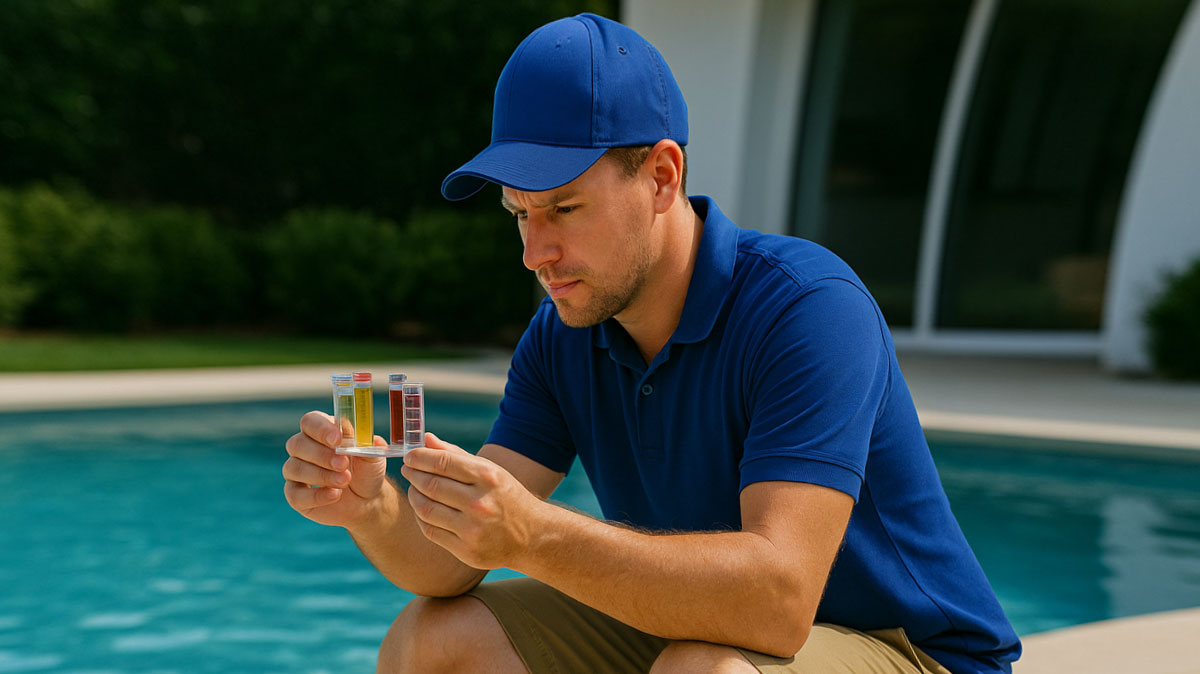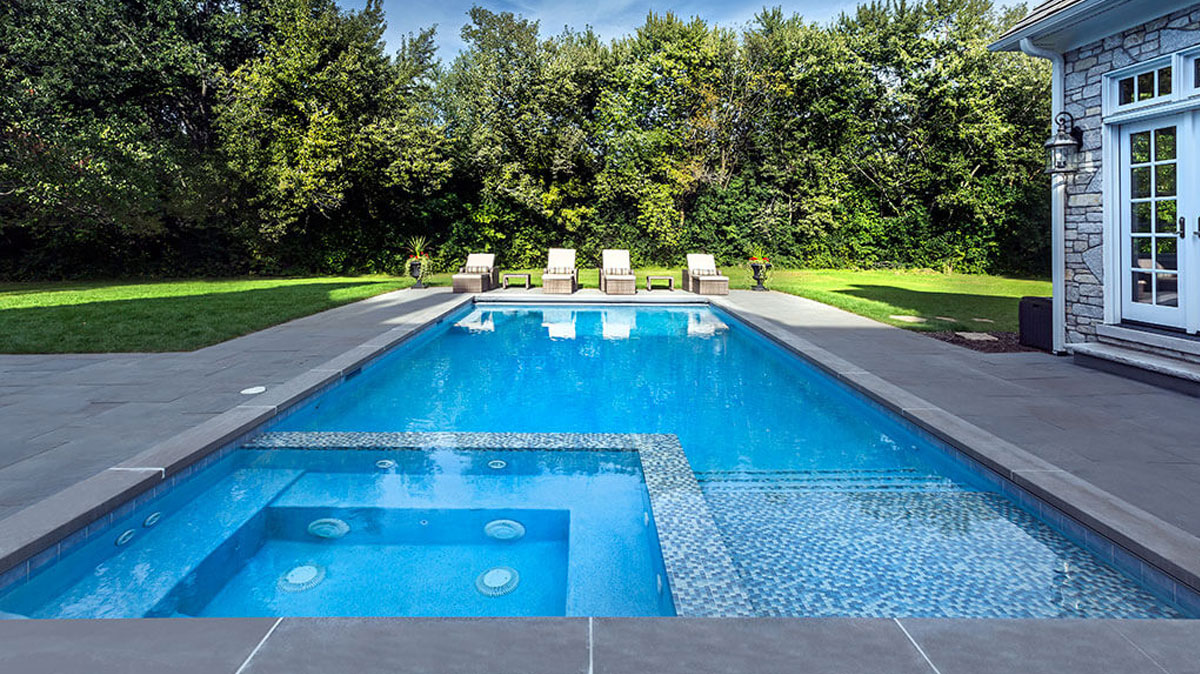
When it comes to enjoying a clean, clear, and safe swimming pool, chemical balance is everything. Improper water chemistry not only leads to murky or irritating water—it can also damage pool surfaces, corrode equipment, and expose swimmers to harmful bacteria. Whether you’re a new pool owner or just want a refresher, this guide breaks down everything you need to know to master pool water chemistry and maintain a sparkling, healthy pool all season long.
Why Chemical Balance Matters
Maintaining the correct balance of chemicals in your pool does three essential things:
- Kills harmful bacteria and viruses that can make swimmers sick.
- Protects your pool equipment from corrosion, scaling, and wear.
- Keeps your water clear and comfortable by preventing cloudiness, algae growth, and skin or eye irritation.
Balanced water also reduces your long-term maintenance costs and extends the life of your pool.
Key Pool Water Chemistry Levels to Monitor
Here are the core elements of pool chemistry and their ideal ranges:
1. pH Level
- Ideal Range: 7.2 – 7.6
- The pH level determines how acidic or basic the pool water is. Water that is too acidic can corrode metal parts and irritate skin and eyes. Water that’s too basic can cause scaling and reduce sanitizer effectiveness.
2. Total Alkalinity (TA)
- Ideal Range: 80 – 120 ppm (parts per million)
- Alkalinity acts as a buffer for the pH level, helping to stabilize it. Low alkalinity causes pH to fluctuate wildly, while high alkalinity can lead to cloudy water and scaling.
3. Chlorine (or Alternative Sanitizer)
- Ideal Free Chlorine Range: 2 – 4 ppm
- Chlorine is the most common pool sanitizer. It eliminates bacteria, algae, and contaminants. However, too much chlorine can irritate skin and eyes, while too little fails to sanitize the water effectively.
4. Calcium Hardness
- Ideal Range: 200 – 400 ppm
- Calcium hardness measures the amount of dissolved calcium in the water. If it’s too low, the water becomes corrosive; too high, and scaling can occur.
5. Cyanuric Acid (Stabilizer)
- Ideal Range (for outdoor pools): 30 – 50 ppm
- Also known as a chlorine stabilizer, cyanuric acid helps protect chlorine from being broken down by sunlight. Without it, you’ll need to add chlorine much more frequently.
How to Test Your Pool Water
To maintain proper balance, regular testing is essential. You can use:
- Test strips – quick and easy for at-home monitoring.
- Liquid test kits – more accurate and customizable.
- Digital testers – high-precision tools ideal for regular users.
- Professional lab testing – available at pool supply stores for in-depth water analysis.
Pro Tip: Test your pool at least twice per week during the swimming season, and daily during high usage or hot weather.

Common Pool Chemical Adjustments
If your levels are off, here’s how to bring them back in range:
- Low pH: Add a pH increaser (sodium carbonate).
- High pH: Add a pH reducer (muriatic acid or sodium bisulfate).
- Low Alkalinity: Add baking soda (sodium bicarbonate).
- High Alkalinity: Add acid carefully while aerating the water.
- Low Chlorine: Add liquid chlorine, granular chlorine, or chlorine tablets.
- High Chlorine: Remove pool cover, allow sun to dissipate chlorine, or dilute with fresh water.
- Low Calcium: Add calcium chloride.
- High Calcium: Partially drain and refill pool with fresh water.
- Low Cyanuric Acid: Add stabilizer (carefully and gradually).
- High Cyanuric Acid: May require partial drain and refill.
Signs Your Pool Water Chemistry is Off
Watch for these common signs of imbalance:
- Cloudy or dull water
- Eye or skin irritation after swimming
- Strong chlorine odor (ironically a sign of too little free chlorine)
- Scaling on tile or fixtures
- Corroded metal or pitted surfaces
- Sudden algae growth
If you see any of these red flags, it’s time to test and rebalance immediately.
Seasonal Pool Chemical Tips
- Opening Your Pool in Spring: Shock the water, test and balance all levels before use, and clean the filter.
- During Peak Summer: Test frequently due to heat, evaporation, and swimmer load. Use stabilizers to preserve chlorine in sunny conditions.
- Closing in Fall: Balance the water before winterizing to prevent corrosion, scale, and algae during the off-season.
- After Heavy Rain or Parties: Retest your water—dilution and increased contaminants can throw levels off quickly.
Best Practices for Long-Term Chemical Maintenance
- Keep a log of test results and chemical additions.
- Store pool chemicals in a dry, ventilated, and secure location.
- Never mix chemicals directly—always add to water, not the other way around.
- Use a pool cover to reduce evaporation and contamination.
If you’re ever unsure about chemical amounts or interactions, consult a pool care professional.
Keep Your Pool Clear, Safe, and Summer-Ready
Pool water that looks great and feels comfortable doesn’t happen by accident—it’s the result of smart, consistent chemical balancing. By understanding the key elements of water chemistry and staying on top of testing and adjustments, you can prevent problems before they start and enjoy your pool with confidence.
Need help with testing, balancing, or professional pool service? Contact Sunset Pools & Spas today to schedule a water analysis or seasonal maintenance. Our team is here to keep your pool clean, safe, and sparkling—so you can focus on relaxing.